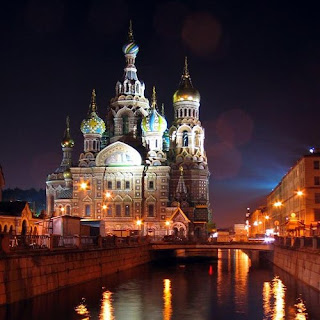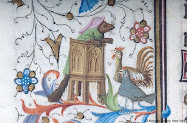"And now those in whom Richard, late king, did put his trust for help were fallen. And when he heard thereof, he grieved more sorely and mourned even to death, which came to him most miserably on the last day of February, as he lay in chains in the castle of Pontefract, tormented by Sir Thomas Swinford with starving fare."*That reference to the chains makes it all sound more than a bit suspicious, but perhaps it was just being stuck in Pontefract that made Richard lose the will to live. There’s less doubt about the death of his uncle, the duke of Gloucester, whose alleged murder – by being held down and smothered with a featherbed – is rather gruesomely recounted in the Rolls of Parliament, along with numerous accusations and counter-accusations of treason. I’ve been rather struck by Paul Binski's explanation of why drawing and quartering was the preferred penalty for condemned traitors. Noting the connection between the king’s body as both an individual, mortal body and the microcosm of the immortal body politic of the realm, he points out that monarchs “had the power to divide others who threatened the body politic with division.”** It's a timely and somewhat chilling reminder that the texts and discourses that so often preoccupy us as researchers had material, visceral impacts on historical human flesh.
In the course of this year's research, I've become very interested in how gender ideals are expressed through the sexed embodiment of institutions in late medieval political thought - for example, the body politic as an extension of the male body of the king, or the household as an extension of the body of its master/father. On the latter idea, Derek Neal's 2008 book The Masculine Self in Late Medieval England*** offers a valuable analysis. He does a great job of relating the discursive models of masculinity expressed in 14th-15th century legal, moral and didactic texts to the way masculinity was actually performed by individual men, as refracted through records of their involvement in court cases, guild activities, civic disputes and other ‘real’ historical events.
So, anyway, I got the final draft of the research project to my supervisor last week. Barring any major criticisms (which I don’t anticipate, based on feedback on the first draft), I should then only need to do some minor proofing/punctuation fixes and tidy up my footnotes (nightmarish!) before it’s ready to submit. I had the oddest feeling when I did the final ‘save’ on that document – like there was suddenly a void I wasn’t quite sure how to fill. That didn’t last long, though, as I reacquainted myself with the joys of being able to go for a long run by the sea (followed by a paddle, water temperature permitting) without having that constant itch at the back of my mind telling me I needed to get back to work.
In other news, I’ve had my abstract accepted for the conference in February (more on that in another post, but thanks to everyone who gave me such good advice on writing it!). I still need to write the actual paper, but I think that may just wait until after Christmas.
*Chronicon Adae de Usk, A.D. 1377-1421, pp.198-9 of the 1904 edition edited and translated by Sir Edward Maunde Thompson. [You can read this edition of the chronicle online at the Internet Archive.]
**Paul Binski, Medieval Death: Ritual and Representation, London: British Museum Press, 1996, p. 65.
***Derek Neal, The Masculine Self in Late Medieval England, Chicago: University of Chicago Press, 2008.








